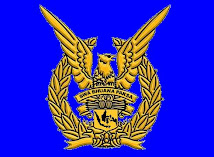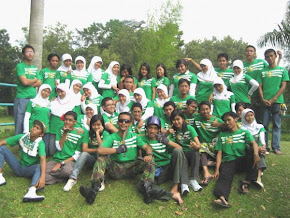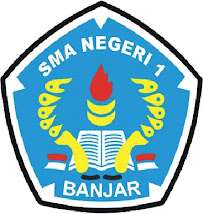Prof. Serge Haroche and Prof. David J. Wineland have independently invented and developed methods for measuring and manipulating individual particles while preserving their quantum-mechanical nature, in ways that were previously thought unattainable.
The Nobel Laureates have opened the door to a new era of experimentation with quantum physics by demonstrating the direct observation of individual quantum particles without destroying them. For single particles of light or matter the laws of classical physics cease to apply and quantum physics takes over.
But single particles are not easily isolated from their surrounding environment and they lose their mysterious quantum properties as soon as they interact with the outside world. Thus many seemingly bizarre phenomena predicted by quantum physics could not be directly observed, and researchers could only carry out thought experiments that might in principle manifest these bizarre phenomena.
Through their ingenious laboratory methods Haroche and Wineland together with their research groups have managed to measure and control very fragile quantum states, which were previously thought inaccessible for direct observation.
The new methods allow them to examine, control and count the particles.
Their methods have many things in common. David Wineland traps electrically charged atoms, or ions, controlling and measuring them with light, or photons.
Serge Haroche takes the opposite approach: he controls and measures trapped photons, or particles of light, by sending atoms through a trap.
Both Laureates work in the field of quantum optics studying the fundamental interaction between light and matter, a field which has seen considerable progress since the mid-1980s.
Their ground-breaking methods have enabled this field of research to take the very first steps towards building a new type of super fast computer based on quantum physics.
Perhaps the quantum computer will change our everyday lives in this century in the same radical way as the classical computer did in the last century.
The research has also led to the construction of extremely precise clocks that could become the future basis for a new standard of time, with more than hundred-fold greater precision than present-day caesium clocks.
Measuring and Manipulating Individual Quantum Systems
The behaviour of the individual constituents that make up our world – atoms (matter) and photons (light) – is described by quantum mechanics. These particles are rarely isolated and usually interact strongly with their environment. The behaviour of an ensemble of particles generally differs from isolated ones and can often be described by classical physics. From the beginning of the field of quantum mechanics, physicists used thought experiments to simplify the situation and to predict single quantum particle behaviour.
During the 1980s and 1990s, methods were invented to cool individual ions captured in a trap and to control their state with the help of laser light. Individual ions can now be manipulated and observed in situ by using photons with only minimal interaction with the environment. In another type of experiment, photons can be trapped in a cavity and manipulated. They can be observed without being destroyed through interactions with atoms in cleverly designed experiments.
These techniques have led to pioneering studies that test the basis of quantum mechanics and the transition between the microscopic and macroscopic worlds, not only in thought experiments but in reality. They have advanced the field of quantum computing, as well as led to a new generation of high-precision optical clocks.
This year’s Nobel Prize in Physics honours the experimental inventions and discoveries that have allowed the measurement and control of individual quantum systems. They belong to two separate but related technologies: ions in a harmonic trap and photons in a cavity (see Fig. 1).
There are several interesting similarities between the two. In both cases, the quantum states are observed through quantum non-demolition measurements where two-level systems are coupled to a quantized harmonic oscillator – a problem described by the so-called Jaynes Cummings Hamiltonian. The two-level system consists of an ion (with two levels coupled by laser light) or a highly excited atom (with two Rydberg levels coupled by a microwave field).
The quantized harmonic oscillator describes the ion’s motion in the trap or the microwave field in the cavity. Here, we describe the implemented methods in the two cases, after a short background, and we present some important applications within science and technology.
This research field started from techniques developed in the 1970s for trapping charged particles. Paul and Dehmelt were awarded the 1989 Nobel Prize in Physics “for the development of the ion trap technique”. An important step towards the control of isolated ions was Doppler cooling, which was proposed by Hänsch and Schawlow (1975) for neutral atoms and by Wineland and Dehmelt (1975) for ions.
The first experiments with ions were performed independently by Wineland and colleagues (Mg+) and by Neuhauser et al. (Ba+) in 1978. Wineland, Ekstrom and Dehmelt (1973) discussed the possibility of catching a single ion as early as 1973. This was achieved by Toschek’s group in 1980 (Neuhauser et al., 1980), who observed a single Ba+ ion in a Paul trap, and by Wineland and Itano (1981), who caught a Mg+ ion in a Penning trap. The group of Gabrielse has developed closely related techniques to cool single electrons captured in a Penning trap (Peil and Gabrielse, 1999).
Ion traps are created in ultrahigh vacuum using a combination of static and oscillating electric fields. There are traps where only one ion is captured, but also linear traps where a few ions are distributed on a line. A trapped ion has an oscillating movement, which is quantized at low temperature. An ion therefore has two sets of quantized levels: vibrational modes that characterize the motion in the trap (also called external states) and electronic levels that describe the internal quantum state of the ion.
These levels can be coupled through light absorption or emission, and through a two-photon process, called Raman transition. The ions can be observed through optical transitions that lead to strong light scattering when excited by a laser.
They can be directly observed by eye or with a CCD camera (Fig. 2). Moreover, the internal state of the ion can be determined by observingquantum jumps. This was demonstrated by Nagourney et al. (1986) and by Wineland and colleagues (Bergquist et al., 1986).
This is done with a narrow-bandwidth laser with frequency ω0 – ων, where ων represents the frequency interval between two vibrational modes of the trap and ω0 is the atomic frequency, i.e. the frequency difference between two electronic levels of the ion. The excited ion decays preferentially towards a state with the same vibrational quantum number ν.
This reduces the ion energy and it gradually cools down to the ν = 0 state. This technique, which was developed by Wineland and coworkers, allows the control of both internal and external degrees of freedom of the ion. By precisely monitoring the trap properties, Fock states of motion (with a well-defined ν) can be created, as well as various well-controlled superpositions of Fock states, e.g., coherent or thermal states (Meekhof et al., 1996).
Another breakthrough was the development of techniques to transfer a quantum superposition of electronic states to a quantum superposition of vibrational modes of the trap (Monroe et al., 1995b), inspired by a theoretical proposal by Cirac and Zoller (1995). Such a quantum superposition can then be transferred to another ion that shares the vibrational states with the first ion, as demonstrated in 2003 by Blatt and collaborators at the University of Innsbruck, Austria (Schmidt-Kaler et al., 2003).
This technique has been extensively used by Wineland and coworkers for decoherence measurements and optical clocks, and is the basis of quantum gates based on trapped ions. We illustrate it with an example in Box 1.
Photons in a cavity
The research field called cavity quantum electrodynamics (CQED) started in the 1980s to study how the properties of an atom (especially spontaneous emission) were affected when the atom is placed in an optical or microwave cavity (for a review of early work, see Haroche and Kleppner, 1989). The suppression of spontaneous emission when the cavity size approaches the emitted light wavelength was observed successfully by Kleppner and his group (Hulet et al., 1985), DeMartini et al. (1987) and Haroche’s group at Yale University (Jhe et al., 1987).
The next step in this research was to study the light amplification in a resonant cavity, with early input from Haroche and collaborators in the microwave region (Goy et al., 1983). A group at the Max Planck Institute for Quantum Optics in Garching, Germany, led by Walther, demonstrated a one-atom micromaser (Meschede et al., 1985), while Haroche and his group showed evidence for a micromaser with two photons (Brune et al., 1987).
Kimble developed CQED in the optical domain (for a review, see Miller et al., 2005), achieving the so-called strong coupling of atom-field interaction in the cavity (Thompson et al., 1992; Hood et al., 1998), in parallel with Haroche’s work in the microwave domain (Brune et al., 1996a).
CQED in the optical domain combines cavity field dynamics with laser cooling and trapping techniques, and has interesting applications in quantum optics and quantum information (McKeever et al., 2004). Cavity-QED has also inspired research using superconducting circuits which has been named Circuit-QED (Schoelkopf and Girvin, 2008).
The main experimental component used by Haroche, Raimond, Brune and their collaborators is a microwave cavity (Fig. 4) that consists of two spherical mirrors separated by a distance of 2.7 cm, made of a superconducting material (Nb) and cooled to very low temperature~0.8 K.
Technological progress in the mirrors’ quality led at the beginning of the past decade to a cavity with an extremely high Q value (4 x 10^10), i.e. implying a very long lifetime of a photon in the cavity, of ~130 ms. In such a cavity, a photon travels about 40,000 km before it disappears.
The field in the cavity is probed by Rb atoms that are prepared in a circular Rydberg state (e.g., n = 50, l = |m|=49). Such atoms have a large area, with a radius of 125 nm, and are very strongly coupled to the field in the cavity.
The transition n = 50 (|↓>) to n = 51 (|↑>) has almost the same frequency as the microwave field in the cavity (51 GHz). Two cavities R1 and R2 (see Fig. 4) are used to create and analyze a controlled quantum superposition between |↓> and |↑>. A selective field ionization detector (D) detects the state of the atom. Photons produced by a coherent source are coupled to the cavity via a waveguide.
The atoms are sent one at a time into the cavity at a controlled velocity and thereby have a controlled time of interaction. In most experiments performed by Haroche’s group, the atom and field have slightly different frequencies. An atom travelling in the cavity does not absorb photons, but its energy levels shift due to the dynamical Stark effect, inducing a phase variation of the microwave field. This phase shift is of the opposite sign, depending on whether the atom is in the |↓> or |↑> state, leading to an entanglement of the atomic and field states (Brune et al., 1996b).
In 1990, Haroche and coworkers suggested a method to measure the number of photons in the cavity in a quantum non-demolition measurement (Brune et al., 1990). Recently, they were able to demonstrate it experimentally (Gleyzes et al., 2007; for a related experiment, see Nogues et al., 1999). Individual photons are captured in a cavity and observed via the interaction with atoms.
The principle of the measurement is explained in more detail in Box 2. This has led to experiments where the "progressive collapse" of a wave function has been observed by means of non-destructive quantum measurements. In these experiments, the number of photons can be followed as it evolves during the measurement (Guerlin et al., 2007).
Experimental investigation of Schrödinger’s cat paradox
A central question in quantum physics is the transition between the quantum and the classical world. This question is illustrated in a popular way by the so-called Schrödinger’s cat paradox. This name refers to a thought experiment proposed by Schrödinger in 1935, emphasizing the difficulty in applying the concepts of quantum mechanics to everyday life (see Fig. 5).
It poses the question: When, as time proceeds, does a quantum system stop existing as a superposition of states and become one or the other? The quantum-classical boundary has been studied by many physicists since the beginning of quantum mechanics in the 1930s (see, e.g., Zurek, 1991, and the review by Leggett et al., 1987).
The control achieved by the groups led by Haroche and Wineland on single quantum systems allowed them to perform Schrödinger’s cat-like experiments in the laboratory, using photons and ions (see a review by Haroche, 1998). In an experiment proposed (Davidovich et al., 1996) and performed by Haroche’s group (Brune et al., 1996b), a superposition of cat-like microwave field states was created by entangling a Rydberg atom with the cavity field. Such a superposition is very fragile and can be destroyed easily via coupling to the environment (in this case, by photons escaping the cavity).
The decoherence of this superposition, i.e. its evolution towards a statistical mixture, could be measured as a function of time and the properties of the superposition of states. Wineland and coworkers performed similar experiments using ion trap technology. They created “cat states” consisting of single trapped ions entangled with coherent states of motion (Monroe et al., 1996) and observed their decoherence (Myatt et al., 2000).
Recently, Haroche and coworkers created cat states, measured them and made a movie of how they evolve from a superposition of states to a classical mixture (Deléglise et al., 2008). This extraordinary control has also led them to implement quantum feedback schemes in which the effects of decoherence are measured and corrected for, thus “stabilizing” a quantum state, e.g., a given Fock state (Sayrin et al., 2011).
Quantum computers
In a seminal theoretical article published in 1995, Cirac and Zoller suggested a way to build a quantum computer with trapped ions. Quantum bits (qubits) are encoded into hyperfine levels of trapped ions, which interact very weakly with the environment and therefore have long lifetimes. Two or more ions can be coupled through the center-of-mass motion (as presented in Box 1). Wineland and his group were the first to carry out experimentally a twoqubit operation (the Controlled NOT gate, CNOT) between motion and spin for Be+ ions (Monroe et al., 1995b).
Since then, the field of quantum information based on trapped ions has progressed considerably. In 2003, Blatt and collaborators in Innsbruck, Austria, achieved a CNOT operation between two Ca+ ions (Schmidt-Kaler et al., 2003).
Today, the most advanced quantum computer technology is based on trapped ions, and has been demonstrated with up to 14 qubits and a series of gates and protocols (see Blatt and Wineland, 2008, for a review). Developing large devices capable of carrying out calculations beyond what is possible with classical computers will require solving substantial challenges in the future.
Optical Clocks
An important application of Wineland’s research with trapped ions is optical clocks. Clocks based on a transition in the optical domain are interesting because the frequency of the transition, which is in the visible or ultraviolet range, is several orders of magnitude higher than that of the Cs clocks operating in the microwave range.
Optical clocks developed by Wineland and coworkers (Diddams et al., 2001; Rosenband et al., 2008; Chou et al., 2010a) currently reach a precision just below 10^-17, two orders of magnitude more accurate than the present frequency standard based on Cs clocks.
An optical ion clock uses a narrow (forbidden) transition in a single ion, insensitive to perturbations. The ion also needs to have strong allowed transitions for efficient cooling and detection. Wineland and colleagues developed a new technique, called quantum logic spectroscopy, based on entanglement of two ion species, as explained in Box 1.
In this technique, one ion provides the spectroscopy transition [e.g., 1 S0→3 P1 in 27 Al+ (267 nm)], while the other one (e.g., 9 Be+ ) has the strong cooling transition (Schmidt et al., 2005).
The precision of two different optical clocks can be compared with the help of the frequency comb technique invented by Hänsch and Hall (2005 Nobel Prize in Physics).
The accuracy recently achieved by the optical clocks has allowed Wineland and coworkers to measure relativistic effects, such as time dilation at speeds of a few kilometers per hour or the difference in gravitational potential between two points with a height difference of only about 30 cm (Chou et al., 2010b).
Summary
David Wineland and Serge Haroche have invented and implemented new technologies and methods allowing the measurement and control of individual quantum systems with high accuracy. Their work has enabled the investigation of decoherence through measurements of the evolution of Schrödinger’s cat-like states, the first steps towards the quantum computer, and the development of extremely accurate optical clocks.
References
J.C. Bergquist, R.G. Hulet, W.M. Itano and D.J. Wineland, Phys. Rev. Lett. 57, 1699 (1986)
R. Blatt and D. Wineland, Nature 453, 1008 (2008)
M. Brune, J.M. Raimond, P. Goy, L. Davidovich and S. Haroche, Phys. Rev. Lett. 59, 1899 (1987)
M. Brune, S. Haroche, V. Lefevre, J.M. Raimond and N. Zagury, Phys. Rev. Lett. 65, 976 (1990)
M. Brune, F. Schmidt-Kaler, A. Maali, J. Dreyer, E. Hagley, J.M. Raimond and S. Haroche, Phys. Rev. Lett. 76, 1800 (1996a)
M. Brune, E. Hagley, J. Dreyer, X. Maître, A. Maali, C. Wunderlich, J. M. Raimond and S. Haroche, Phys. Rev. Lett. 77, 4887 (1996b)
C.W. Chou, D.B. Hume, J.C.J. Koelemeij, D.J. Wineland and T. Rosenband, Phys. Rev. Lett. 104, 070802 (2010a)
C.W. Chou, D.B. Hume, T. Rosenband and D.J. Wineland, Science 329, 1630 (2010b)
J.I. Cirac and P. Zoller, Phys. Rev. Lett. 74, 4091 (1995)
L. Davidovich, M. Brune, J. M. Raimond and S. Haroche, Phys. Rev. A 53, 1295 (1996)
S. Deléglise, I. Dotsenko, C. Sayrin, J. Bernu, M. Brune, J.M. Raimond and S. Haroche, Nature 455, 510 (2008)
F. De Martini, G. Innocenti, G.R. Jacobovitz and P. Mataloni, Phys. Rev. Lett. 59, 2955 (1987)
S.A. Diddams, Th. Udem, J.C. Bergquist, E.A. Curtis, R.E. Drullinger, L. Hollberg, W.M. Itano, W.D. Lee, C.W. Oates, K.R. Vogel and D.J. Wineland, Science 293, 825 (2001)
F. Diedrich, J.C. Bergqvist, W.M. Itano and D.J. Wineland, Phys. Rev. Lett. 62, 403 (1989)
S. Gleyzes, S. Kuhr, C. Guerlin, J. Bernu, S. Deléglise, U. Busk Hoff, M. Brune, J. M. Raimond and S. Haroche, Nature 446, 297 (2007)
P. Goy, J.M. Raimond, M. Gross and S. Haroche, Phys. Rev. Lett. 50, 1903 (1983)
C. Guerlin, J. Bernu, S. Deléglise, C. Sayrin, S. Gleyzes, S. Kuhr, M. Brune, J.M. Raimond and S. Haroche, Nature 448, 889 (2007)
S. Haroche and D. Kleppner, Phys. Today 42, 24 (1989)
S. Haroche, Phys. Today 51 (7), 36 (1998)
C.J. Hood, M.S. Chapman, T. W. Lynn and H.J. Kimble, Phys. Rev. Lett. 80, 4157 (1998)
R.G. Hulet, E.S. Hilfer and D. Kleppner, Phys. Rev. Lett. 55, 2137 (1985)
T.W. Hänsch and A.L. Schawlow, Opt. Comm. 13, 68 (1975)
W. Jhe, A. Anderson, E.A. Hinds, D. Meschede, L. Moi and S. Haroche, Phys. Rev. Lett. 58, 666 (1987)
A.J. Leggett, S. Chakravarty, A.T. Dorsey, M.P.A. Fisher, A. Garg and W. Zwerger, Rev. Mod. Phys. 59, 1 (1987)
J. McKeever, A. Boca, A.D. Boozer, R. Miller, J.R. Buck, A. Kuzmich and H.J. Kimble, Science 303, 1992 (2004)
D.M. Meekhof, C. Monroe, B.E. King, W.M. Itano and D.J. Wineland, Phys. Rev. Lett. 76, 1796 (1996)
D. Meschede, H. Walther and G. Müller, Phys. Rev. Lett. 54, 551 (1985)
R. Miller, T.E. Northup, K.M. Birnbaum, A. Boca, A.D. Boozer and H.J. Kimble, J. Phys. B 38, S551 (2005)
C. Monroe, D.M. Meekhof, B.E. King, S.R. Jefferts, W.M. Itano, D.J. Wineland and P. Gould, Phys. Rev. Lett. 75, 4011 (1995a)
C. Monroe, D.M. Meekhof, B.E. King, W.M. Itano and D.J. Wineland, Phys. Rev. Lett. 75, 4714 (1995b)
C. Monroe, D.M. Meekhof, B.E. King and D.J. Wineland, Science 272, 1131 (1996)
C.J. Myatt, B.E. King, Q.A. Turchette, C.A. Sackett, D. Kielpinski, W.H. Itano, C. Monroe and D.J. Wineland, Nature 403, 269 (2000)
W. Nagourney, J. Sandberg and H. Dehmelt, Phys. Rev. Lett. 56, 2797 (1986)
W. Neuhauser, M. Hohenstatt, P.E. Toschek and H. Dehmelt, Phys. Rev. Lett. 41, 233 (1978)
W. Neuhauser, M. Hohenstatt, P.E. Toschek and H. Dehmelt, Phys. Rev. A 22, 1137 (1980)
G. Nogues, A. Rauschenbeutel, S. Osnaghi, M. Brune, J.M. Raimond and S. Haroche, Nature 400, 239 (1999)
S. Peil and G. Gabrielse, Phys. Rev. Lett. 83, 1287 (1999)
T. Rosenband, D.B. Hume, P.O. Schmidt, C.W. Chou, A. Brusch, L. Loirin, W.H. Oskay, R.E. Drullinger, T.M. Fortier, J.E. Stalnaker, S.A. Diddams, W.C. Swann, N.R. Newbury, W.M. Itano, D.J. Wineland and J.C. Bergquist, Science 319, 1808 (2008)
C. Sayrin, I. Dotsenko, X. Zhou, P. Peaudecerf, T. Rybarczyk, S. Gleyzes, P. Rouchon, M. Mirrahimi, H. Amini, M. Brune, J.M. Raimond and S. Haroche, Nature 477, 73 (2011)
P.O. Schmidt, T. Rosenband, C. Langer, W.M. Itano, J. C. Bergquist and D.J. Wineland, Science 309, 749 (2005)
F. Schmidt-Kaler, H. Häffner, M. Riebe, S. Gulde, G.P.T. Lancaster, T. Deuschle, C. Becher, C.F. Roos, J. Eschner and R. Blatt, Nature 422, 408 (2003)
R.J. Schoelkopf and S.M. Girvin, Nature 451, 664 (2008)
E. Schrödinger, “Die gegenwärtige Situation in der Quantenmechanik (The present situation in Quantum Mechanics)”, Naturwissenschaften 23, 807, 823, 844 (1935)
R.J. Thompson, G. Rempe and H.J. Kimble, Phys. Rev. Lett. 68, 1132 (1992)
D.J. Wineland and H. Dehmelt, Bull. Am. Phys. Soc. 20, 637 (1975)11 (11)
D.J. Wineland, R.E. Drullinger and F.L. Walls, Phys. Rev. Lett. 40, 1639 (1978)
D. J. Wineland, P. Ekstrom and H. Dehmelt, Phys. Rev. Lett. 31, 1279 (1973)
D.J. Wineland and W.M. Itano, Phys. Rev. A 20, 1521 (1979)
D.J. Wineland and W.M. Itano, Phys. Lett. A 82, 75 (1981)
W.H. Zurek, Phys. Today 44, 36 (1991)
"Learning gives creativity
Creativity leads to thinking
Thinking provides knowledge
Knowledge makes you great
Knowledge gives powers
Knowledge rules the world
knowledge provides wisdom"
~Arip~
Sumber:
1.
http://www.nobelprize.org/nobel_prizes/physics/laureates/2012/
2.
http://www.nist.gov/pml/div688/grp10/index.cfm
3.
http://www.college-de-france.fr/site/en-serge-haroche/
4. Belajar dari Tradisi Nobel oleh: Agnes Aristiarini





















































